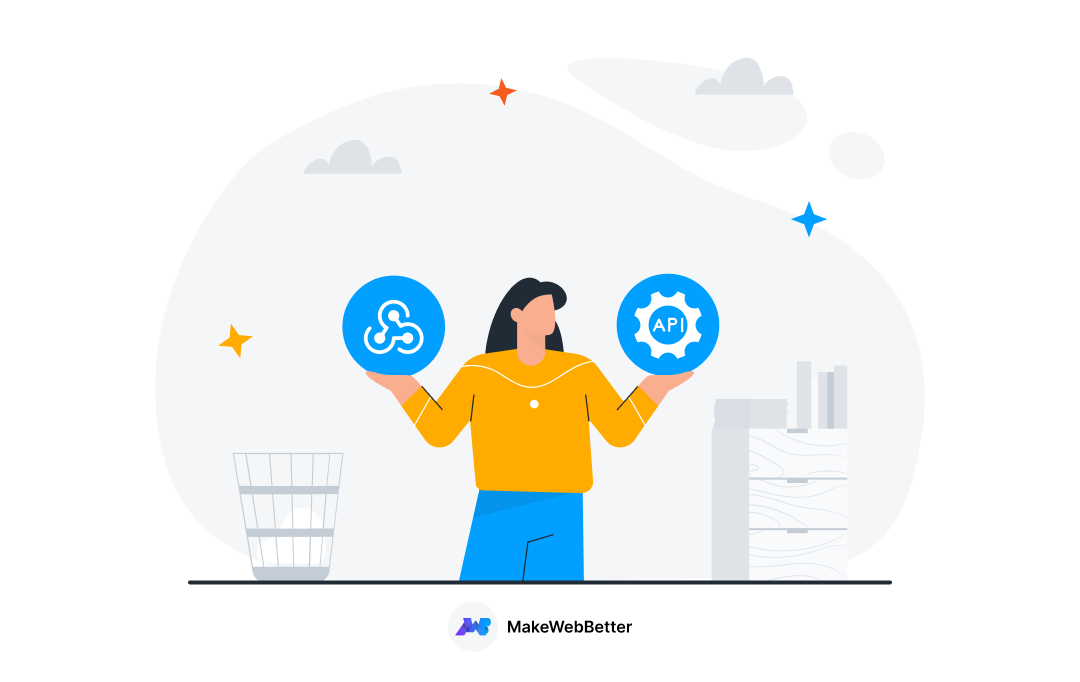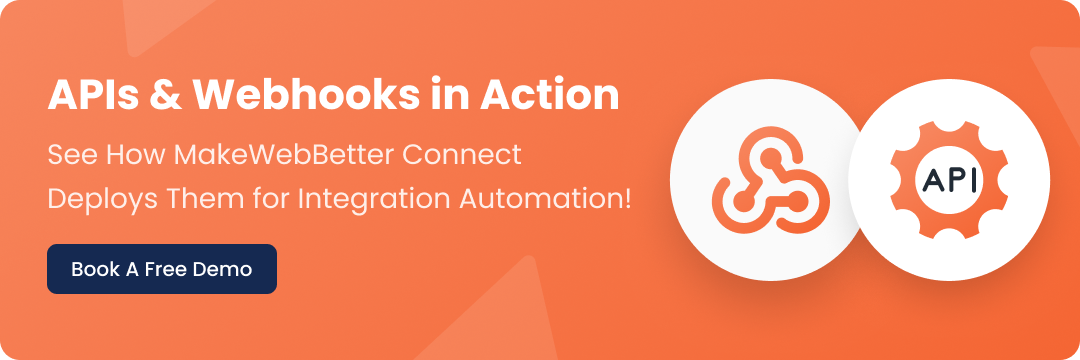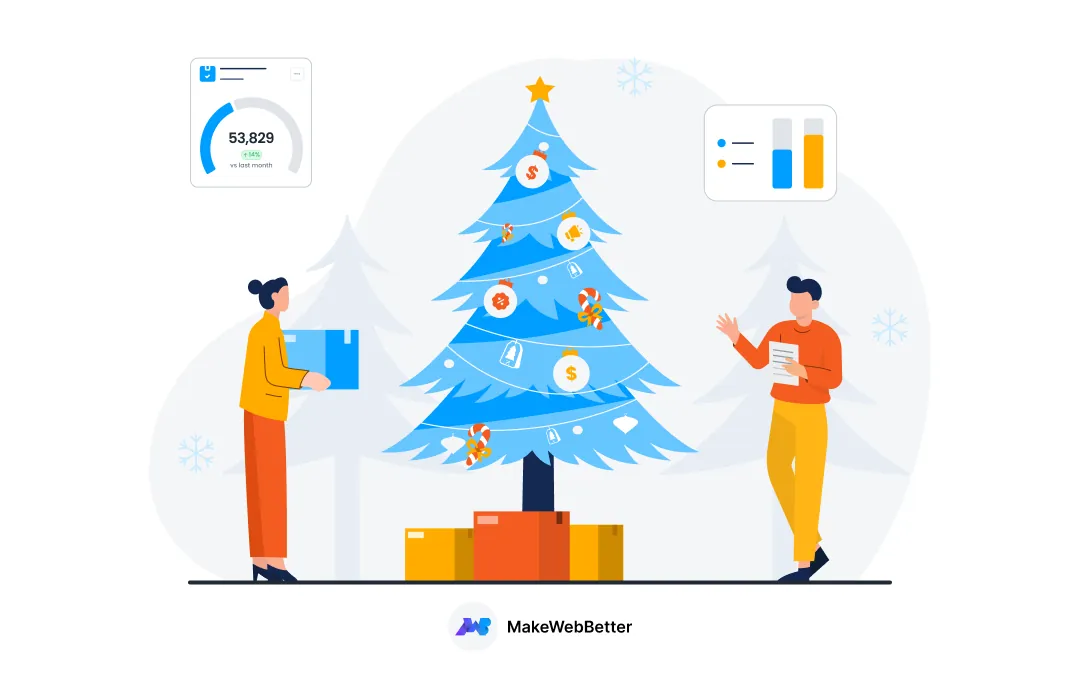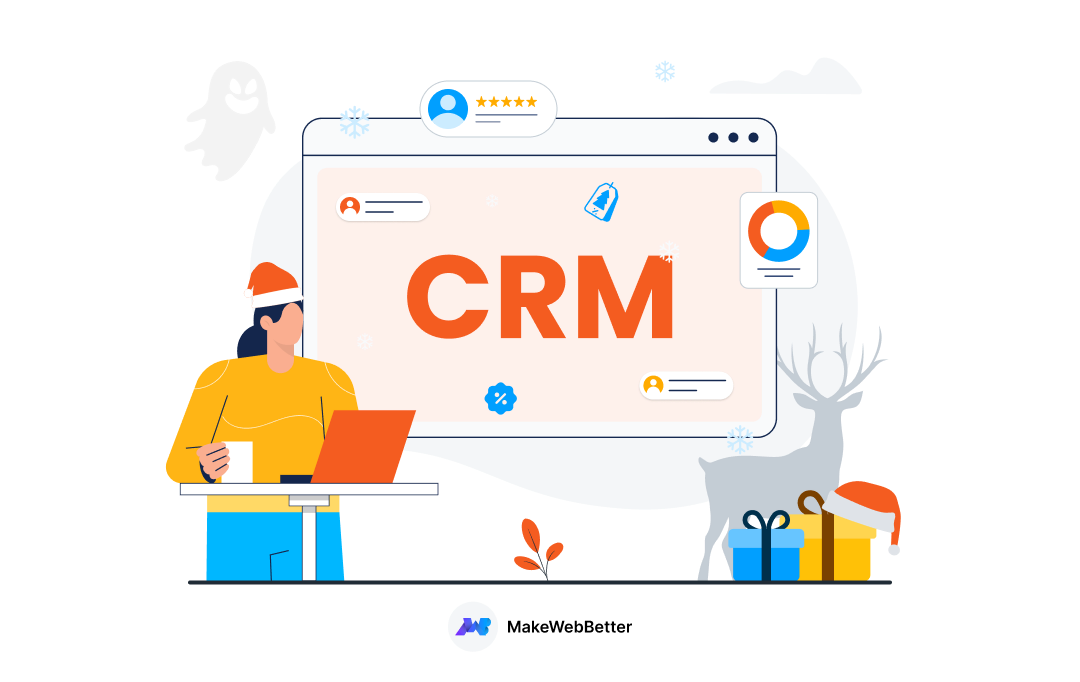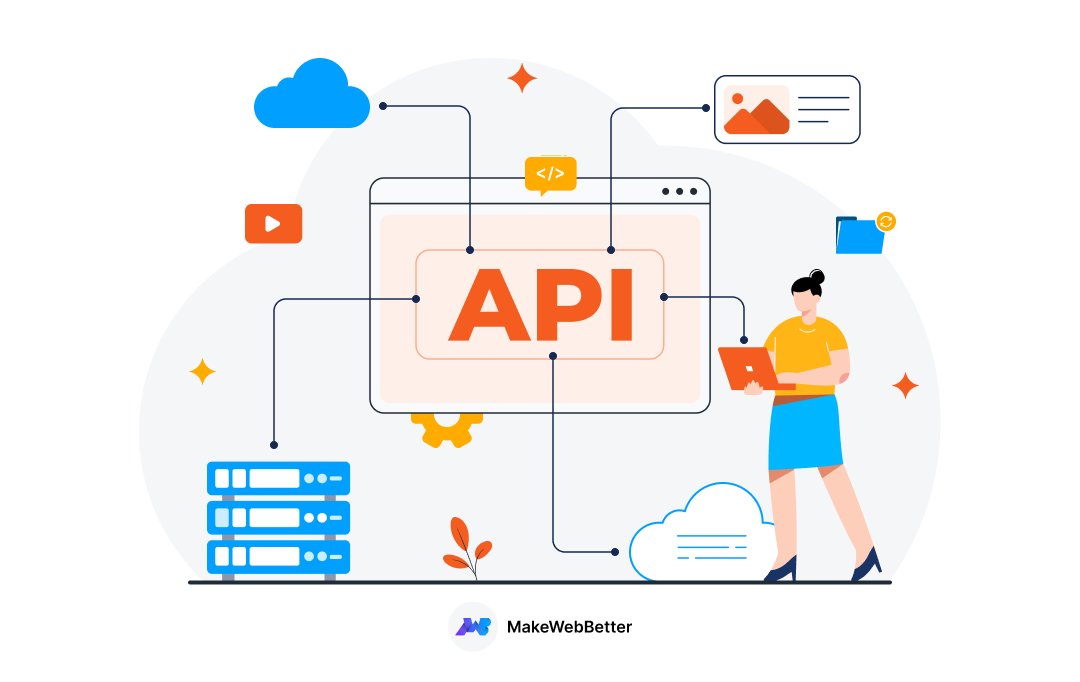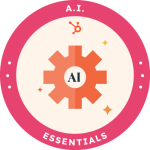Webhooks vs API: Both are the intermediaries that connect platforms and drive data integration automation, but they work in fundamentally different ways.
Think of it like this—one team constantly calls for updates (API polling), while another gets automatic notifications when something changes (Webhooks). That’s the key difference, and it explains why some systems update instantly while others have delays.
I presume you’re not here for “nutshell.”
Great! A thorough understanding of the difference between webhooks and API will lead the way for the precise application in your data integration requirements. Let’s begin!
Understanding The Concept of APIs
What is an API?
An API (Application Programming Interface) is a set of rules and protocols to connect platforms. When configured, it acts as a bridge that allows connected applications to communicate by sending and receiving data based on predefined rules.
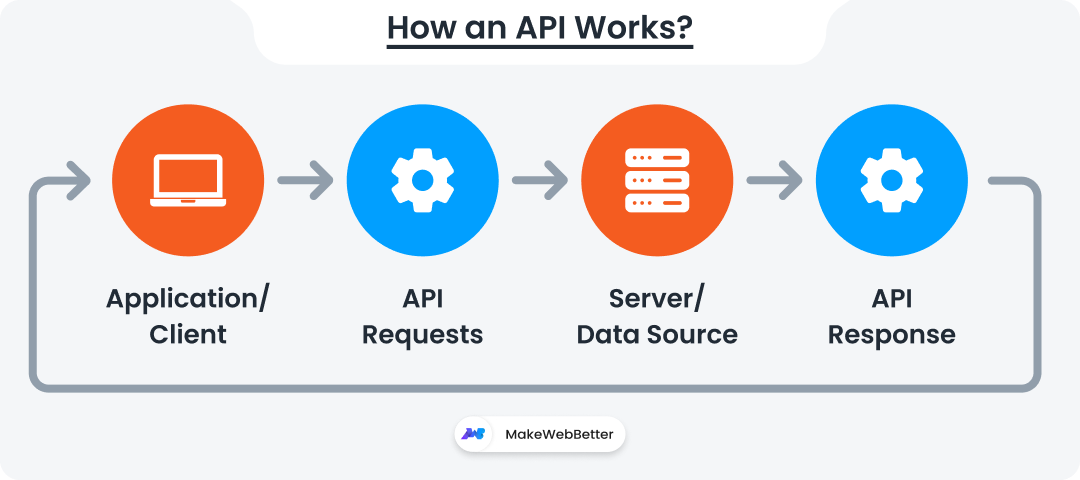
In the comparison of webhooks vs API, the latter typically works on a request-response model—one system sends a request, and another system responds with data or performs an action. This process of exchanging information is called an API call.
So, you now know how API works.
The Glorious Purpose of APIs
Beyond data exchange, APIs also handle authentication, security, and permissions, ensuring controlled access of data to different systems. Furthermore, APIs also help in the creation of new features and services, secure communication, and integration of a variety of systems. For integration automation, API call enables seamless connections, automating tasks and streamlining workflows.
Simply put, APIs allow digital platforms to talk to each other. However, some APIs require constant requests to check for updates—this is known as API polling. Think of API polling as checking your email. (Conversely, there’s webhooks.)
The downside? In contrast to webhooks vs API, API Polling can involve delays, consume resources, and slow down data integration automation, especially when dealing with recurrent updates or large datasets.
With this, you might be able to picture the application of Webhooks vs API.
What is Webhook?
Webhooks, too are an HTTP request like APIs.
Unlike APIs, webhooks don’t wait to be asked—they automatically send updates when something changes—facilitating real time data integration without constant requests.
It’s like receiving a push notification instead of refreshing your inbox.
How do Webhooks work?
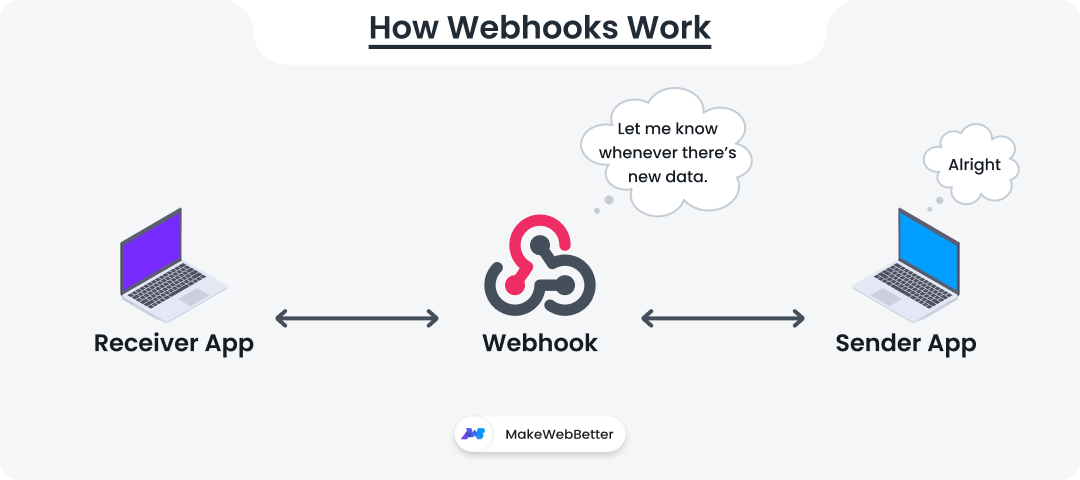
- Event Occurs: A specific scenario happens on an application (e.g., a new sign-up).
- Webhook Sends Data: The application sends the relevant data (payload) to a predefined platform (the webhook endpoint).
- Receiving System Processes It: The receiving application takes action based on the data (e.g., updating a CRM, sending a confirmation email or notification, triggering a workflow).
What is Webhooks’ Flexibility to Overcome The Rigid API Mechanism
Webhooks are a way for applications to send automated real time updates to each other without needing constant data requests. Instead of asking for updates repeatedly (like API polling), webhooks push data automatically whenever something happens.
This real time approach makes webhooks more efficient and flexible for event-driven automation.
The Key Difference Between Webhooks and API
If you’re still feel unclear about establishing differences in the above explanation of API vs webhooks, let’s make it more interesting.
Would you like to hear a fun tech fable?
I found a conversation in the archives that states the difference between webhooks and API. Once upon a time…
XYZ Client (Requesting System): Hey, API. Any updates for me?
API: Hey, lemme check! [Knocks on application’s door] Hey, anything new for XYZ?
Application: Hmm… Yeah, here’s some fresh data!
API: Got it! Here you go, Client.
XYZ Client: Thanks! But wait… why didn’t you send it earlier?”
API: Because you’re using an API call, you have to keep asking me for updates.
XYZ Client: Huh. Why do I always have to ask? Why can’t I just get updates whenever something new happens?
API: Sounds like you need my buddy Webhook! Webhooks listen for changes and notify you the moment something happens—no need to ask.
XYZ Client: That sounds way more efficient! So… does that mean you’re outdated?
API: Nope! That’s just called real…
XYZ Client: Excuse me?
Application: …real time syncing.
Here, they got strict with each other and only communicated on a periodic basis.
Yeah, I might have gotten carried away, but hasn’t it always been this way? Did you picture them sitting under a tree, stuck in their routine?
So, what did we learn?
- The API call initiates polling, involving data requests at fixed intervals.
- Polling is inefficient—like checking a clock every minute instead of setting an alarm.
As we are comparing webhooks vs API, the former enables near real time syncing, reducing server overloads. So, webhooks are more efficient!
Before we dive deeper into exploring the difference between API and webhooks. Drop a comment if you’d like to hear more of these pre-techtoric tales!
Webhooks Vs API Explained
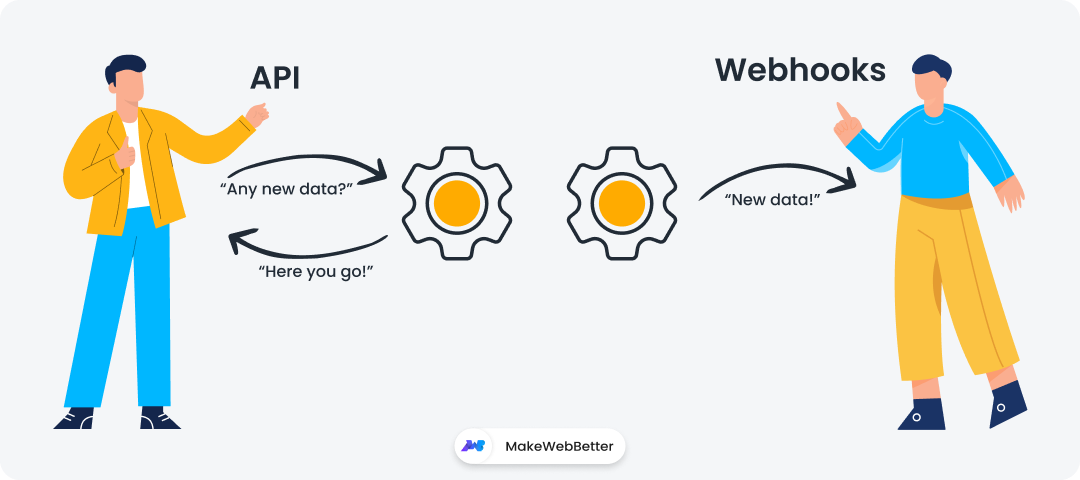
APIs pull data while webhooks push data.
Webhooks vs API—the latter are request-driven, while the former are event-driven.
To strike a clear difference—Webhooks are often called “reverse APIs” because the commencement point of communication flow is reversed.
While Webhooks can send the data without requiring any user input, APIs require an input from the client application in the form of an HTTP request. Let’s discuss more on the approach and explore what traits real-time data integration tools have.
| Aspect | API (Polling) | Webhook (Event-Driven) |
| Communication Mechanism | Client pulls data updates at intervals. | Server pushes updates instantly when an event occurs. |
| Authentication | Uses API keys, OAuth, JWTs. | Requires secret tokens, signatures, or IP whitelisting. |
| Latency & real time Data Sync | Updates are delayed based on polling interval. | Near real time data sync as soon as something changes. |
| Resource Usage | APIs consume more bandwidth. | Webhooks are lightweight and reduce server load. |
| Control Over Data Retrieval | Client decides when and how often to fetch data. | Server decides when to send data based on events. |
| Use Case Examples | On-demand data retrieval, updates. | Immediate reactions to events, notifications. |
Here are certain other aspects that could help you determine the difference between API and webhooks to be used over the long term.
| Scalability | Can increase server load due to excessive polling. | Scales better; updates happen only when needed. |
| Efficiency | Less efficient; requires periodic polling / repeated requests. | More efficient; eliminates unnecessary checks and enables real time data integration. |
| Reliability | More predictable; failures can be retried immediately. | Requires handling missed events (e.g., retry mechanisms). |
An API call works best for structured requests, while webhooks shine in real time data integration. When you’re exploring API vs webhooks you must know that the speed of data integration defines the opportunities you have with it.
Why Are Webhooks Essential for Integration Automation?
Webhooks play a crucial role in modern automation—enabling real time data sync. They are basically the backbone of data integration automation, webhooks prevent bottlenecks by automating real time data integration. We need them as an essential for:
- Instant data synchronization between apps.
- Reducing delays in workflow execution.
- Minimizing manual intervention for better efficiency.
Key Benefits of Webhooks in Automation:
The fast-moving digital landscape has a dire need for instant data flow. Webhooks fulfill this and solve the inefficiencies of delayed updates and redundant API call, making automation smarter and more responsive.
- Less Manual Effort (Efficiency): Automates data management, eliminating repetitive checks or manual updates, improving efficiency.
- Faster Workflows (Speed): Reduced server loads enable real time data integration with accelerated processes and decision-making.
- Improved User Experience (User-first): Seamless communication between apps, ensures users experience as they get informed with up-to-the-minute updates.
- Data Accuracy & Consistency (No Loopholes): Webhooks eliminate sync delays, ensuring that systems always reflect the most accurate data.
Webhooks aren’t just about automation—they’re about creating a more agile, efficient, and user-friendly ecosystem for businesses of all sizes. That should be your key takeaway from this read on API vs webhooks.
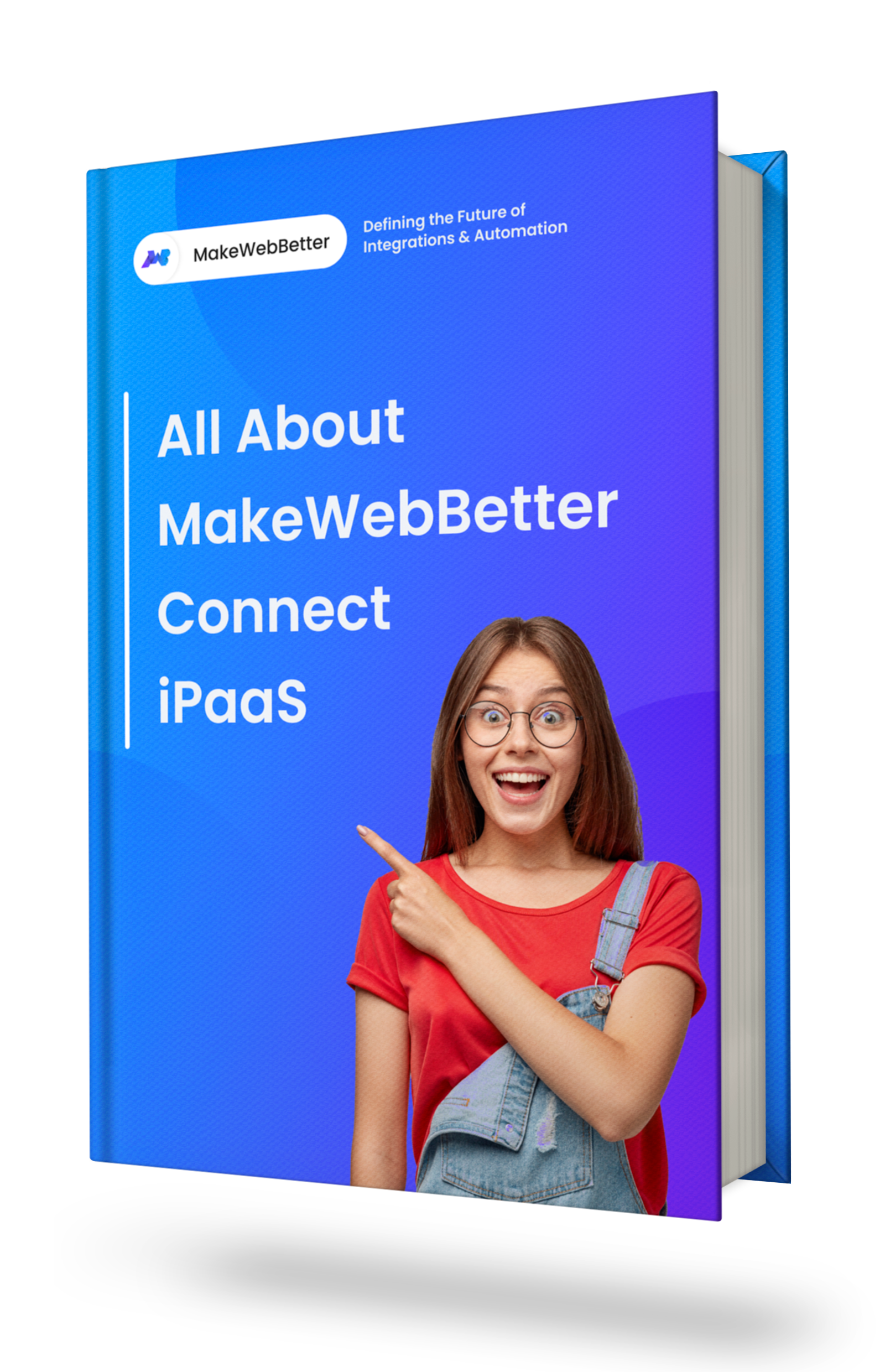
Witness Webhooks and APIs In Action
Explore MakeWebBetter Connect and learn how an iPaaS optimizes data integration automation by deploying both the approaches effectively.
MakeWebBetter Connect iPaaS: Balance of Integration Automation
Modern businesses need more than just data integration—they need real time connectivity across their infrastructure that ensures systems stay updated without inefficiencies. That’s where MakeWebBetter Connect iPaaS shines.
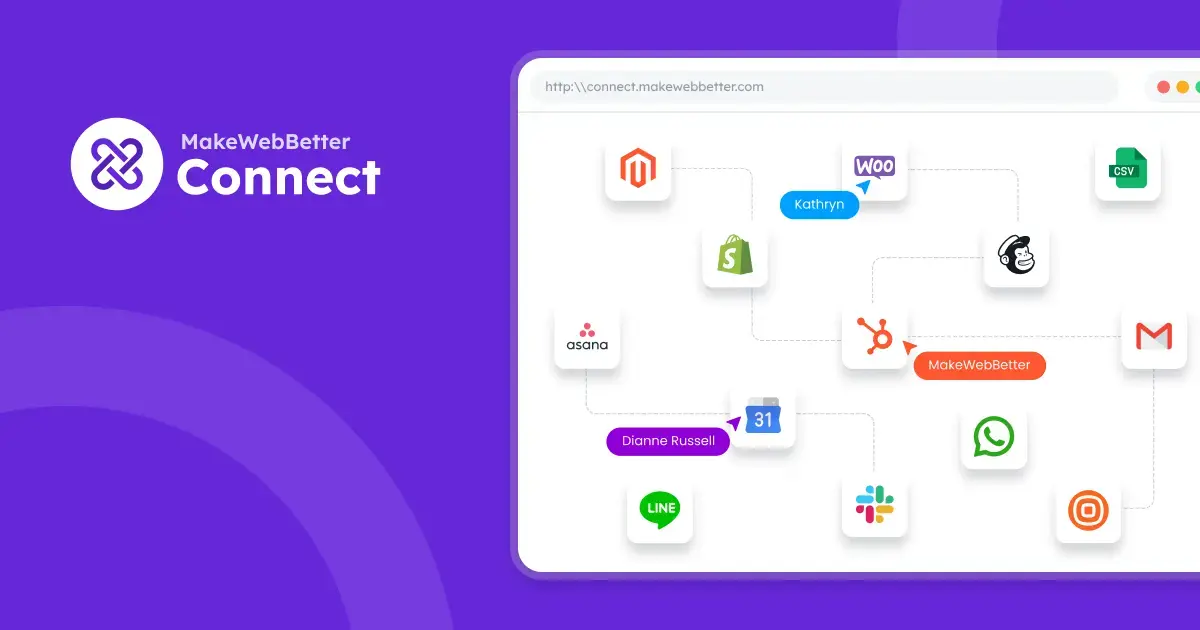
MakeWebBetter Connect is a Hubspot-centered iPaaS solution, which offers prebuilt integration apps, integration workflow templates, core HubSpot features, and essential data integration features.
The iPaaS solution ‘MakeWebBetter Connect’ is a prime example of how the amalgamation of API and Webhooks helps custom integration and data automation between connected systems. With event-triggered actions, multi-platform compatibility, and real time data updates, it eliminates custom integrations and delivers a sustainable integration solution.
Unlike rigid data integrations that rely solely on API polling or webhooks, MakeWebBetter Connect balances both to deliver efficient, scalable integration automation.
🔹 APIs ensure structured communication and controlled data fetching.
🔹 Webhooks enable instant updates for event-driven automation.
By combining the best traits found in Webhooks vs API, MakeWebBetter Connect iPaaS ensures prebuilt data integration and custom integrations across platforms, whether it’s syncing CRM data, processing eCommerce transactions, or automating data dependency tasks.
How does MakeWebBetter Connect maximize integration scalability together rather than finding the best in Webhooks vs API? Let’s explore this further!
How MakeWebBetter Connect Uses Webhooks and API Together?
Real time data integration tools utilize both structured data retrieval (APIs) and instant event-driven updates (Webhooks). MakeWebBetter Connect blends both to ensure seamless data automation across platforms. So, in the case of iPaaS, there is no API vs webhooks; both are equally significant.
With MakeWebBetter Connect, you get the best of both worlds—structured communication via APIs and real time triggers via Webhooks.
The Role of APIs in MakeWebBetter Connect
- Fetches structured data when needed.
- Ensures compatibility with multiple cloud platforms.
- Potential compatibility with legacy systems.
- Facilitates custom integrations across applications.
- Transfers data through workflow-based automation.
The Role of Webhooks in MakeWebBetter Connect
- Triggers instant updates when an event occurs.
- Enables real time automation without constant polling.
- Reduces unnecessary API call, optimizing performance.
Resolve your queries!
Get all your queries answered about MakeWebBetter Connect and webhooks vs API.
Final Thoughts
What is webhooks vs API—They both serve different integration purposes but work best when used together. Webhooks bring speed, and APIs bring structure—there’s no choosing the right one; it just depends on your requirement.
Understanding Webhooks vs API isn’t about choosing one over the other—it’s about leveraging both for smarter automation.
Besides identifying the key difference between webhooks and API, you now know their applications through the real time data integration tools. Furthermore, instead of resorting to any one, you know of a solution, ‘MakeWebBetter Connect’ helps you strike a balance between the goodness of both.

